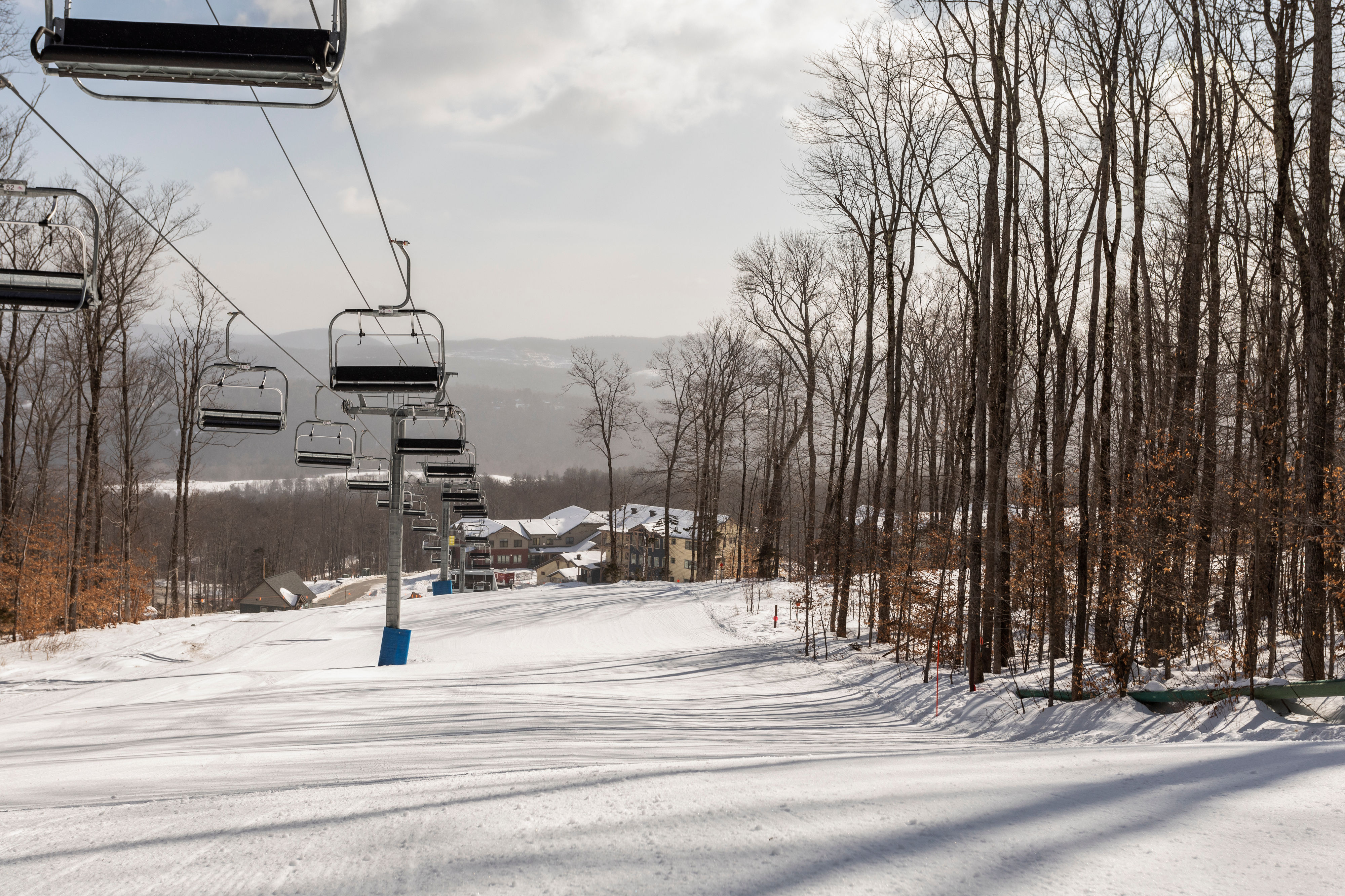
All About Maple Sugaring in Vermont
Sugaring is hard work. During the winter, Vermont’s roughly 1,600 commercial sugar makers work around the clock to drill new taps in the sugar maples in their plot, or sugarbush. They canvass the woods, visiting each and every tree, assessing its health and drilling a new hole to allow last year’s taphole to heal. Then they connect that “tap” to a network of plastic tubes that runs down to a main line that connects with their sugarhouse.
Come spring, the same cycles of freezing cold nights and warm, sunny days that turn November’s hard-pack base into March’s mashed potatoes and perfect corn snow kick the state’s sugar maples into action; when the sap starts to flow a tree can produce gallons upon gallons, which are then collected by pipe or bucket.
Sugarers (as they are called) visit each maple tree in the forest, inspect the taps and make sure they are flowing. In the old days, metal buckets were used to gather the sap. Today, plastic tubes link the trees, creating a maze in the forest. They feed the sap into a large barrel or container that is then brought to the sugarhouse. In some cases, the sap flows right to the sugarhouses.
Before the watery, liquid sap is introduced to a massive evaporator, most commercial operations run it through a reverse osmosis machine, which allows as much as 75 to 80 percent of the water to be extracted before it is boiled in the evaporator, saving time and energy. As a rule of thumb, it takes about 40 gallons of maple sap to produce a single gallon of pure maple syrup. Over the course of a season, the color and flavor profile of the syrup shifts, from the lightest “Golden Color and Delicate Taste” at the start, to “Dark Color and Robust Taste” to “Processing Grade” at the end.
Though modern technology like reverse osmosis allows larger commercial operations to either boil until just after dark, when the sap stops running, or to automate the process through the night, many sugar makers, whether backyard hobbyists or small-scale producers, still man their evaporators through the wee hours of the morning as Vermonters have done since the 1700s.
They may invite friends and family to stack wood and feed the fire that fuels their evaporator (larger operations use gas). Kids skim foam off the surface of the hot sap. Some serve big meals and feed their neighbors as thanks for their help, inviting them to gather in the steamy, gently sweet air of the sugarhouse.
Vermont Maple Syrup Tours and Tastings
A Vermont maple syrup tour is a great opportunity to talk with sugar makers, learn how the process works and, if it is spring, to watch the boiling process in action. Each spring and fall, the Vermont Maple Sugar Makers Association (an organization that has been around since 1893) hosts open houses at sugaring operations around the state. Visit vermontmaple.org for a list of dates of those Open House weekends and which sugaring operations are open to visitors.
The Ludlow area is rife with sugar makers that open their operations to the public each spring during sugaring season. But if you want to buy direct, you can also visit these three year-round.
- Green Mountain Sugarhouse, Ludlow
Right in Ludlow, on Route 100 North, a second generation of Harlows is operating Green Mountain Sugarhouse. The sugarhouse was built in 1967 by David and Marjorie Harlow and their daughter Ann and husband Douglas now run it and do most things themselves, from tapping the trees and collecting the sap to boiling it and packing it into bottles and jugs. They also make their own maple cream, maple candies and nut candies. Their store sells crafts as well.
-
Smith Maple Crest Farm, Shrewsbury
Sugaring has been going on for more than 200 years, mainly in the same family, at the Smith’s Maple Crest Farm in Shrewbury, about 14 miles from Ludlow. In 1805 the land was cleared to make way for a dairy farm. In 1850, the farmers planted sugar maples four feet apart along the roadside, maples that still produce sap for syrup today. Willard “Jeff” Smith, a seventh-generation Vermonter, has been keeping this Vermont maple syrup farm since the 1970s and learned the art of sugaring from his grandfather. The farm was visited by poet Robert Frost in 1957, and its 27-room farmhouse now welcomes overnight guests from May through October. The farm has converted from dairy to beef and in addition to its maple products, sells its grass-fed beef and homemade sausage at the farm store.
-
Stewart Maple, Shrewsbury
Located just 13 miles northwest of Ludlow on Route 103 in Cuttingsville, Stewart Maple is truly a family-run operation. Co-owners and brothers Elliott and Tanner Stewart have been sugaring since they were young boys and now tap trees on more than 1,200 acres. Their father Mark runs the evaporator and mother Gina and Elliott’s wife Alyssa make many of the maple recipes for things like maple candies or hard brittle that they sell in the Stewart Marketplace.
